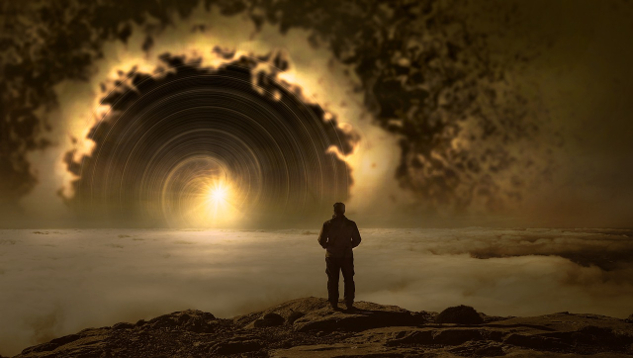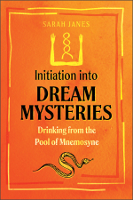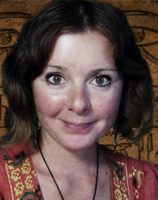
Kuva Stefan Keller
Mitä on unien inkubaatio? Yksinkertaisesti sanottuna unien inkubaatio on mikä tahansa tekniikka tai tekniikoiden yhdistelmä, jonka tarkoituksena on saada aikaan haluttu unelma. Esivanhemmillemme tämä tarkoittaisi mitä todennäköisimmin jumalallisen kokonaisuuden tai kuolleen henkilön etsimistä. Tämä olento saattaa tarjota näkemystä tulevaisuudesta, neuvoja, ihmeitä, parannuskeinoja tai spontaaneja jumalallisia parannuksia.
Perinteisesti unien inkubaatiota valmisteleviin rituaaleihin sisältyi yleensä puhdistuksen, katarsisin, paaston, puhdistuksen, uhrauksen, uhrien, rukouksen, maagisen kirjoittamisen ja loitsujen yhdistelmä, pyhiinvaellus pyhille paikoille ja joskus unien aikaansaaminen tiettyjen onirogeenisten aineiden avulla. Mesopotamiassa, Levantissa, muinaisessa Egyptissä ja Kreikassa käytettiin kaikkien näiden tekniikoiden yhdistelmiä.
Tällaisten kulttuurien unelmakäytännöt – joissa on kehittyneet kirjoitus- ja tallennusjärjestelmät sekä koulut eliittien pappien kirjanoppineille – kehittyivät varmasti niitä edeltäneiden ei-lukutaitoisten kulttuurien metafyysisen linssin kautta. Ajatus itsensä tekemisestä "puhtaaksi" on eräänlainen pakanallinen edeltäjä iskulauseelle "puhtaus on jumalisuuden vieressä". Muuttamalla itsesi puhtaaksi ja puhtaaksi astiaksi saat itsesi linjaan jumalallisen periaatteen kanssa ja kutsut pyhää suosiota.
Myöskään kielen ja varhaisen kirjoittamisen vaikutusta uneen ei voi yliarvioida. Kirjoittaminen on itsessään maaginen teko, ja monet muinaiset käsikirjoitukset ovat kehittyneet symbolisesta taiteesta ja kuvasta. Kun unentulkinta kehittyi ammatiksi muinaisissa Lähi-idän sivilisaatioissa, se antaa vaikutelman, että se nähdään ensisijaisesti lukutaitoisten työnä. Sanapeli, lyönnit, erityisesti homofonit – vihjailu sen ei-lukutaitoisiin juuriin ja assosiaatio ovat klassisten unien tulkintatekstien tukipilareita esimerkiksi muinaisessa Egyptissä. Uskon, että ihmisen henkinen ajattelu ja siksi monet maailmamme kulttuurit syntyivät muistin, kielen ja unelmien yhteydessä.
Kieli ohjelmoi kulttuurimuistiamme ja hienosäätyy unelmoinnin lujittuviin prosesseihin. Joka ilta muokkaamme itseämme maailmamme mukaan ja vahvistamme itsellemme, keitä olemme, missä olemme ja mikä tarinamme on. Joten ehkä toinen tapa tarkastella unia on nähdä, että ne tarjoavat persoonallisuuden inkubaatioalueen, liminaalialueen, jossa psyyken arkkitehtuuri voi kehittyä. Ehkä tästä syystä vauvat viettävät noin 50 prosenttia ajastaan muistia organisoivassa REM-unessa – kaksi kertaa niin paljon kuin aikuiset. Ehkä näissä ylellisen pitkissä REM-univaiheissa vauvat työskentelevät erityisen kovasti selvittääkseen, keitä he ovat, missä he ovat ja mikä heidän tarinansa on.
Dreamtime kuin peilimaailma
Unelmamaailmassa on peilihallin laatua. Unissa pystymme näkemään itsemme useista näkökulmista; meistä tulee kaikki silmät, jotka tutkivat itseämme joka kulmasta. Tavallisessa tietoisuudessa se näyttää ikään kuin olisimme olemassa itsenäisenä kokonaisuutena. Meillä on eräänlainen liminaalinen tila, jossa olemme oppineet kuorimaan yksilöllisen identiteettimme pois muusta kosmoksesta. Ohuen, heijastavan kerroksen piilotetulla puolella, joka on hereillä, minä olen muu maailma haaveile meistä-fraktaloitunut minä, sekoittuva minäkuva, joka ikuisesti etsii jonkinlaista koherenssia.
Geopsykologian syntyvaiheessa tutkimukset ovat osoittaneet, että persoonallisuuden piirteet voivat muodostua vastauksena kaikenlaisiin ulkoisiin tekijöihin, mukaan lukien geologia, sää, ympäristö, maisema ja paikallinen kulttuuri. Uskon, että integroimme tämän valtavan datamäärän intensiivisimmin yöllä, rakentaen hitaasti oman sisäisen peilimaailmamme koko eliniän ajan ja käyttämällä sitä tilana järjestellä ja sovittaa yhteen heräävän maailman kokemuksia.
Oletko koskaan kokenut, että heräsit unesta etkä yhtäkkiä tiedä kuka tai missä olet? Tuntuu siltä, että koko identiteettisi on hetkeksi jäädytettynä. Tämän kaltaiset kokemukset, eräänlainen parasomnia tai hämmentynyt kiihottumiskokemus, joita useimmiten kokevat pienet lapset, saavat minut miettimään, missä unelmamme tarkalleen ottaen muotoutuvat ja toteutuvat.
Unilla ja unilla on selvästi poikkeuksellisen tärkeä rooli muistin muodostumisessa ja tietoisuudessa, mutta koko järjestelmä jää epätäydellisesti ymmärretyksi. Ihmettelen, oliko muinaisilla, kunnioittaen muistia, esi-isiä ja kehittyneitä muistovälineitä, joita he kehittivät suullista tarinankerrontaperinnettä varten, erilaisia, ehkä kietoutuneempia tietoisia ja alitajuisia muistinkäsittelykykyjä kuin meillä nykyajan ihmisillä.
Ihmiset näyttävät nykyään ulkoistaneen suuren osan muististaan kaikkialla leviävän Internetin synteettisten globaalien aivojen digitaalisiin tallennusrakenteisiin. Tämä universaali hermoverkko näyttää nyt ohjaavan suurimman osan elämästämme. Se on asettanut jonkin verran lommoa kykyymme muistaa ja kuvitella, ja tämä on ilmennyt niin kutsuttuna "digitaalisena amnesiana" tai "digitaalisena dementiana" ja saattaa jopa olla myötävaikuttava tekijä joissakin afantasiatapauksissa, kyvyttömyydessä muodostua. mielikuvia ihmisistä, paikoista ja asioista.
Voimmeko elää hyvää unelmaelämää ilman yhtenäisiä henkilökohtaisia muistoja ja eloisaa mielikuvitusta? Millaista valveillaoloa elämme ilman hyviä unelmia? Monilla lapsilla on upea unelmaelämä, jossa on monia selkeyden tapahtumia. Muiden nuorten aivojen neurofysiologisten ominaisuuksien ohella suuri osa tästä saattaa johtua ajasta, jonka pienet lapset viettävät mielikuvituksellisessa leikissä.
Muinaiset unelmien oraakkelit
Muinaisessa maailmassa uni-oraakkeli saattoi viitata henkilöön – ammattimaiseen unelmoijaan, joka haaveilee puolestasi ja ennustaa sinulle tulevaisuuttasi – tai se voi olla ihmisen oma profeetallinen unelma, jossa tulevaisuus paljastuu, yleensä salaperäisiä merkkejä, joita unen tulkki saattaa edelleen kiusata. Muinaisissa asiakirjoissa tulevaisuuden unelmaa kuvataan harvoin suoraviivaiseksi näkemykseksi tapahtumista, joita ei vielä avata; se muistuttaa todennäköisemmin eräänlaista visuaalista pulmapeliä, joka koostuu unen merkeistä, usein sanan tai sanojen visuaalisista esityksistä, ja joka osaa asiantuntijan uudelleenjärjestelyn avulla kirjoittaa ennustuksen olennaiset osat.
Unelmien orakulaarinen luonne kaikkialla muinaisessa maailmassa kiehtoo minua todella. Luulen, että se osoittaa, että ihminen toimii ennustajana ja aistien luojana, ehkä johtuen ainutlaatuisesta markkinaraosta, jonka olemme tulleet miehittämään eläinkunnan sisällä.
Taiteen, pelien, arkkitehtuurin ja kielen kehitys antoi meille työkaluja esittää maailmaa sellaisena kuin sen näimme, ja näin tehdessämme loimme mielikuvituksellisen, mentaalisen todellisuuden kerroksen, joka koostuu tiedosta, ajatuksista, ideoista ja mahdollisuuksista. hyvin paljon käsitettä noosfääri kuten Vladimir Vernadsky ja Pierre Teilhard de Chardin ovat selventäneet. Jopa tietorikkaalla aikakaudellamme – ja paradoksaalisesti ottaen huomioon tiedevetoisen kulttuurimme – näytämme palaamassa johonkin orakulaariseen ajattelutapaan.
Kaikesta ymmärtäminen
Me nykyajan ihmiset olemme yhä enemmän tietoisia ja kyllästyneitä, kun pyrimme epätoivoisesti löytämään merkityksen, ymmärtämään kaikkea, erottelemme toisistaan. Tietoisuutemme näyttää pirstoutuvan, kun se yrittää ennustaa tulevaisuutta yhä monimutkaisemmassa, raivokkaasti muuttuvassa ja kaoottisessa maailmassa.
Pelastuksemme on siellä, missä se on aina ollut – syvässä yhteydessä luontoon ja transsendenttiseen, hurmaavaan kokemukseen.
tekijänoikeus ©2022. Kaikki oikeudet pidätetään.
Muokattu kustantajan luvalla,
Destiny Books, jäljennös Sisäisten perinteiden kansainvälinen lentokenttä.
Artikkeli Lähde:
Initiaatio unelmien mysteereihin: Juominen Mnemosynen altaalta
Kirjailija: Sarah Janes Selkeän unenohjaajan Sarah Janes jakaa yli vuosikymmenen tutkimustyönsä unitemppeleistä ja esoteerisen perinteen mysteerikouluista. Hän tutkii mielikuvituksen, muistin ja tietoisuuden kehitystä kautta aikojen ja ehdottaa, että unet ovat olleet perustavanlaatuisia luomisessa ja kehityksessä. kulttuurista.
Selkeän unenohjaajan Sarah Janes jakaa yli vuosikymmenen tutkimustyönsä unitemppeleistä ja esoteerisen perinteen mysteerikouluista. Hän tutkii mielikuvituksen, muistin ja tietoisuuden kehitystä kautta aikojen ja ehdottaa, että unet ovat olleet perustavanlaatuisia luomisessa ja kehityksessä. kulttuurista.
Selittääkseen, kuinka tietoinen unelmaelämä on välttämätöntä itsensä löytämiselle, syvälle integroitumiselle ja paranemiselle, Sarah esittelee harjoituksia, tekniikoita, initiaatioita ja seitsemän ohjattua äänimeditaatiota, jotka auttavat sinua tutkimaan psyykesi sisäisiä syvyyksiä. Saara paljastaa, kuinka unet tarjoavat meille mahdollisuuden muistaa ja kokea suoraan jumalallisuutemme, ylittää kuolevaisuutemme rajoitukset ja astua ajattomiin mielikuvitusmaailmoihin. Nämä ulottuvuudet, joihin pääsee unelmien kautta, voivat auttaa sinua muodostamaan paremman käsityksen siitä, kuka olet.
Klikkaa tästä saadaksesi lisätietoja ja/tai tilataksesi tämän pokkarikirjan. Saatavana myös äänikirjana ja Kindle-versiona.
kirjailijasta
 Sarah Janes on ollut innostunut unelmoija lapsuudesta asti. Hän on kirjailija, julkinen puhuja ja unihypnoosityöpajan ohjaaja. Hän johtaa Explorers Egyptologya, online-luentosarjaa, ja Carl Hayden Smithin kanssa Seventh Ray, sekatodellisuuden mysteerikoulu. Hän on myös tuottaja ja isäntänä Anthony Peake -tietoisuustunti podcast.
Sarah Janes on ollut innostunut unelmoija lapsuudesta asti. Hän on kirjailija, julkinen puhuja ja unihypnoosityöpajan ohjaaja. Hän johtaa Explorers Egyptologya, online-luentosarjaa, ja Carl Hayden Smithin kanssa Seventh Ray, sekatodellisuuden mysteerikoulu. Hän on myös tuottaja ja isäntänä Anthony Peake -tietoisuustunti podcast.
Sarah työskentelee parhaillaan tohtori Mervat Nasserin kanssa New Hermopoliksessa Egyptissä sekä Rupert Sheldraken ja British Pilgrimage Trustin kanssa elvyttääkseen unelmien hautomisen käytäntöä pyhissä paikoissa. Hän asuu Hastingsissa, Englannissa.
Vieraile hänen verkkosivustollaan osoitteessa TheMysteries.org/























